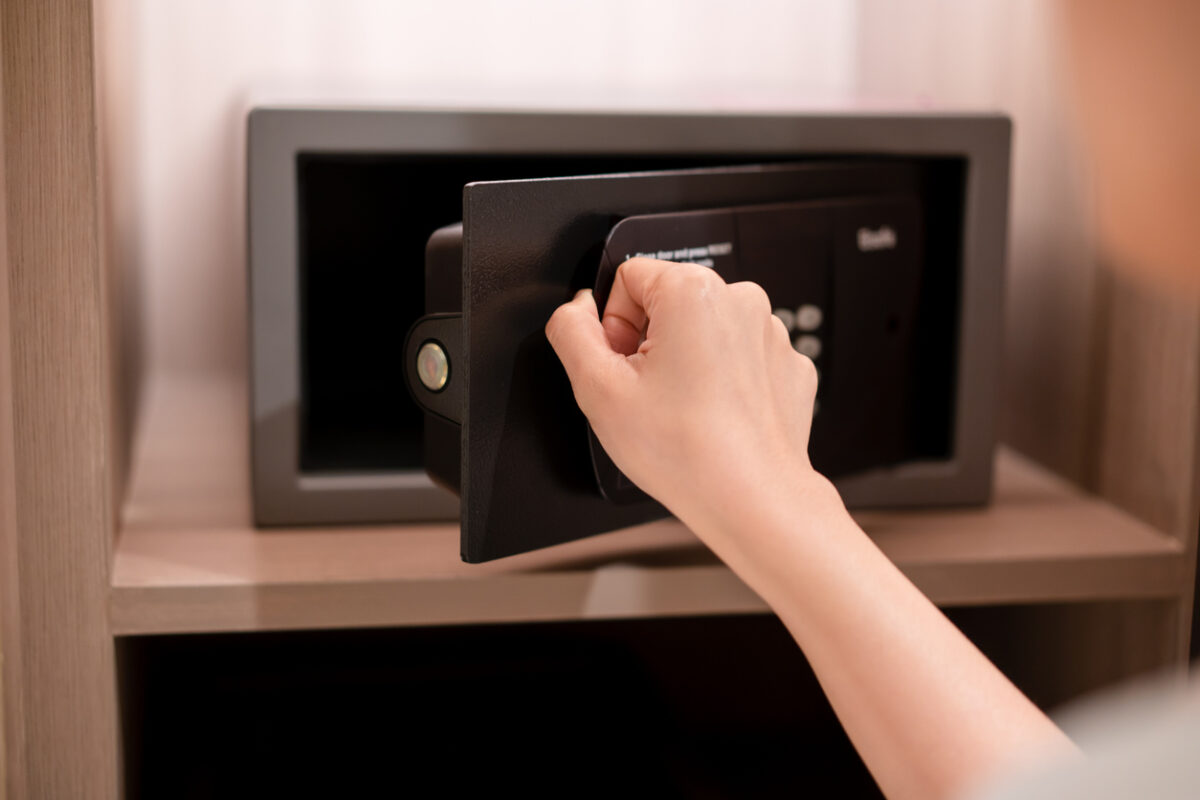We may earn revenue from the products available on this page and participate in affiliate programs. Learn More ›
The best home safe keeps your important documents, jewelry, guns, or other valuables safe and secure—either from others in the house or in the event of a break-in. However, with so many different types of safes and locking options available, deciding which model to purchase can be an overwhelming task.
Before making a decision on a home safe, it is important to learn more about the different types of safes, what they are designed to hold, and how they work.
RELATED: 14 Secret Storage Spots That Are Already in Your Home
Popular Types of Home Safes
There are six main types of safes. While they all share the same overall purpose of securing valuables, they have different characteristics, thicknesses, and security ratings that can make them better suited to different needs and situations. Read on to learn more about each safe type to decide which best matches your specific needs.
1. Fire Safe

Fire safes are designed to withstand the high heat and flames of a fire, keeping the contents unscathed. They have different ratings, and some can withstand flames and high temperatures for varying amounts of time.
Note that some safes are fireproof, while others are simply labeled as fire-resistant. This distinction can impact the level of protection the safe is able to offer, so be sure to compare the fire ratings and specifications. Additionally, some manufacturers offer warranties or guarantees for the protection their safes will provide in the event of a fire.
It is important to note, however, that most fire safes (aside from those classified as both fire- and burglar-proof) are not all that secure. While they can often withstand flames, they won’t offer much protection against a burglar breaking into the safe to access its contents. For this reason, some security experts recommend leaving these safes unlocked. This way, if a burglar does find the safe, they may open it and see only documents and nothing worth stealing. Otherwise, if the safe is locked, they’ll likely just take it with them to open later.
Best For: Keeping documents and family mementos from getting destroyed in a fire.
Our Recommendation: SentrySafe Fireproof and Waterproof Safe on Amazon for $264.99
This digital combination safe is UL-Classified to withstand 1 hour at temperatures up to 1,700 °F.
2. Burglary Safe
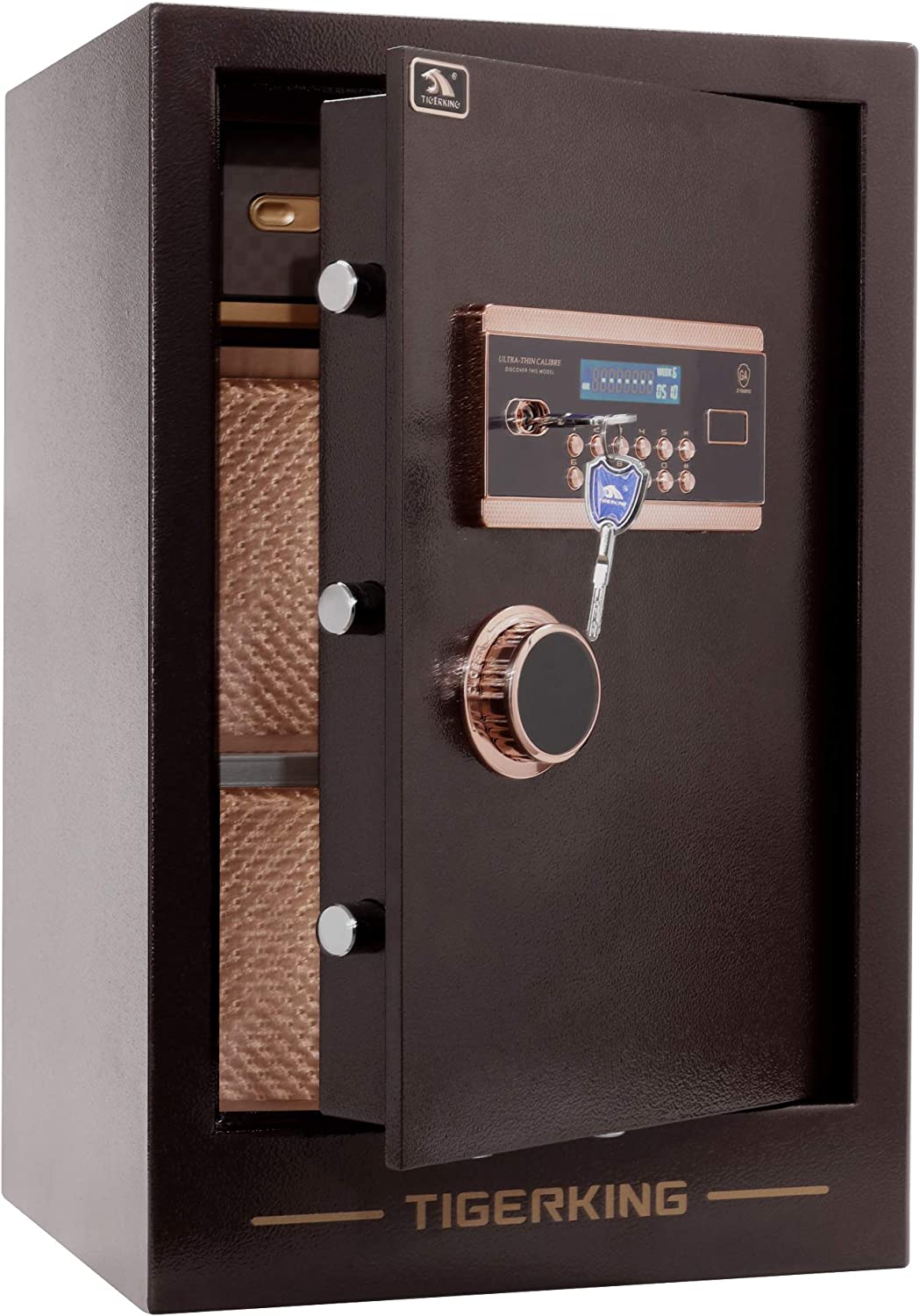
As you can probably guess by the name, a burglary safe is designed to keep valuables protected in the event of a break-in. This type of safe is frequently viewed as the best home security safe, as they are often made using thicker and more secure materials. The best burglary safes are made of steel and are very heavy.
Additionally, burglary safes often feature tamper-proof technology or require individuals to utilize two different methods (key, fingerprint, combination, etc.) to gain entry. These security measures and durable construction help burglary safes stand up to the tools and techniques that burglars frequently use, including cutting torches, power tools, hand tools, and more.
Burglary safes may also be fireproof, but you’ll want to confirm with the manufacturer’s specifications to be certain.
Best For: Protecting valuables from criminals.
Our Recommendation: Tigerking Burglary Digital Security Safe on Amazon for $348.99
With its thick steel plates, five live-locking bolts, and dual digital and key lock, this safe will protect your belongings from burglars.
3. Gun Safe
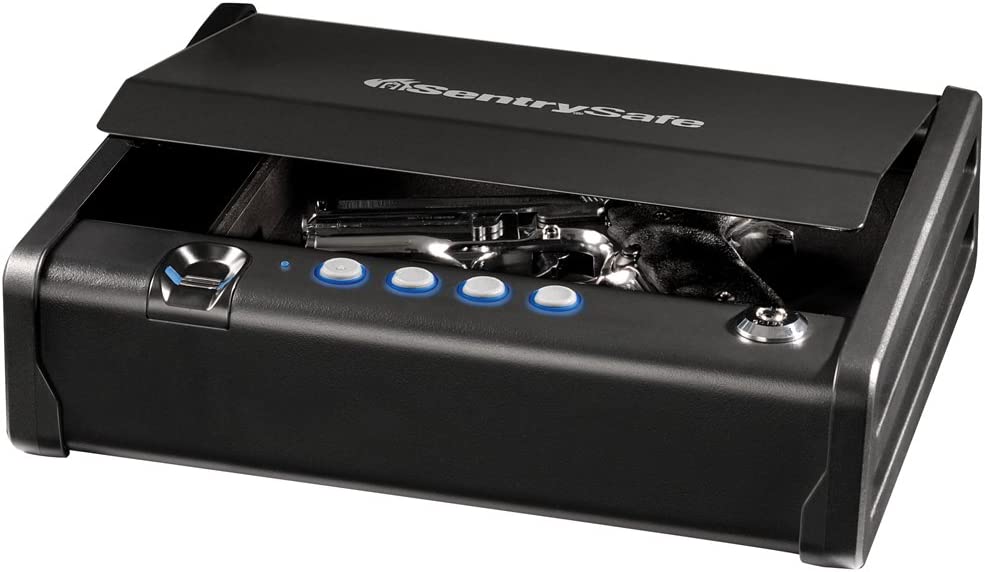
Gun safes keep firearms in a home secure from children, other household members, guests, and criminals. They are also designed to prevent a gun from accidentally firing in the house and causing injury.
You can find a small home safe for one or two handguns that could fit in a bedside drawer. Alternatively, there are also larger gun cabinets for holding rifles or multiple firearms. Gun safes often feature different mounting options—such as to the wall or under a table—to keep them easily accessible but out of view.
Many gun safes require individuals to utilize multiple measures to access the contents. However, they are also designed to be opened quickly to allow individuals to access a firearm quickly in the event of an emergency.
Best For: Preventing children and other unwanted individuals from accessing the guns in a home.
Our Recommendation: SentrySafe Gun Safe with Biometric Lock on Amazon for $209.99
This solid steel gun safe features a fingerprint scanner and gas strut that allow users to open it quickly and quietly when needed.
4. Jewelry Safe

If you’re looking to keep valuable gold or silver jewelry, treasured family heirlooms, or other sentimental pieces protected from intruders or damage, look for a jewelry safe. In addition to the security they provide with their thick construction and locking mechanisms, jewelry safes are also designed to protect against scratches. They often feature velvet-lined interiors and shelves or drawers to help users organize their pieces.
Some jewelry safes are more secure than others, so be sure to check the ratings, locking mechanisms, materials, and thicknesses of each model you’re considering. Additionally, you can also find jewelry safes that are fireproof.
Best For: Keeping jewelry, watches, and important mementos safe.
Our Recommendation: Paragon Lock & Safe Superior Wall Safe on Amazon for $149.99
This jewelry safe, which installs between the studs in a wall, opens with a digital code and offers three shelves to keep jewelry safe and organized.
5. Floor Safe
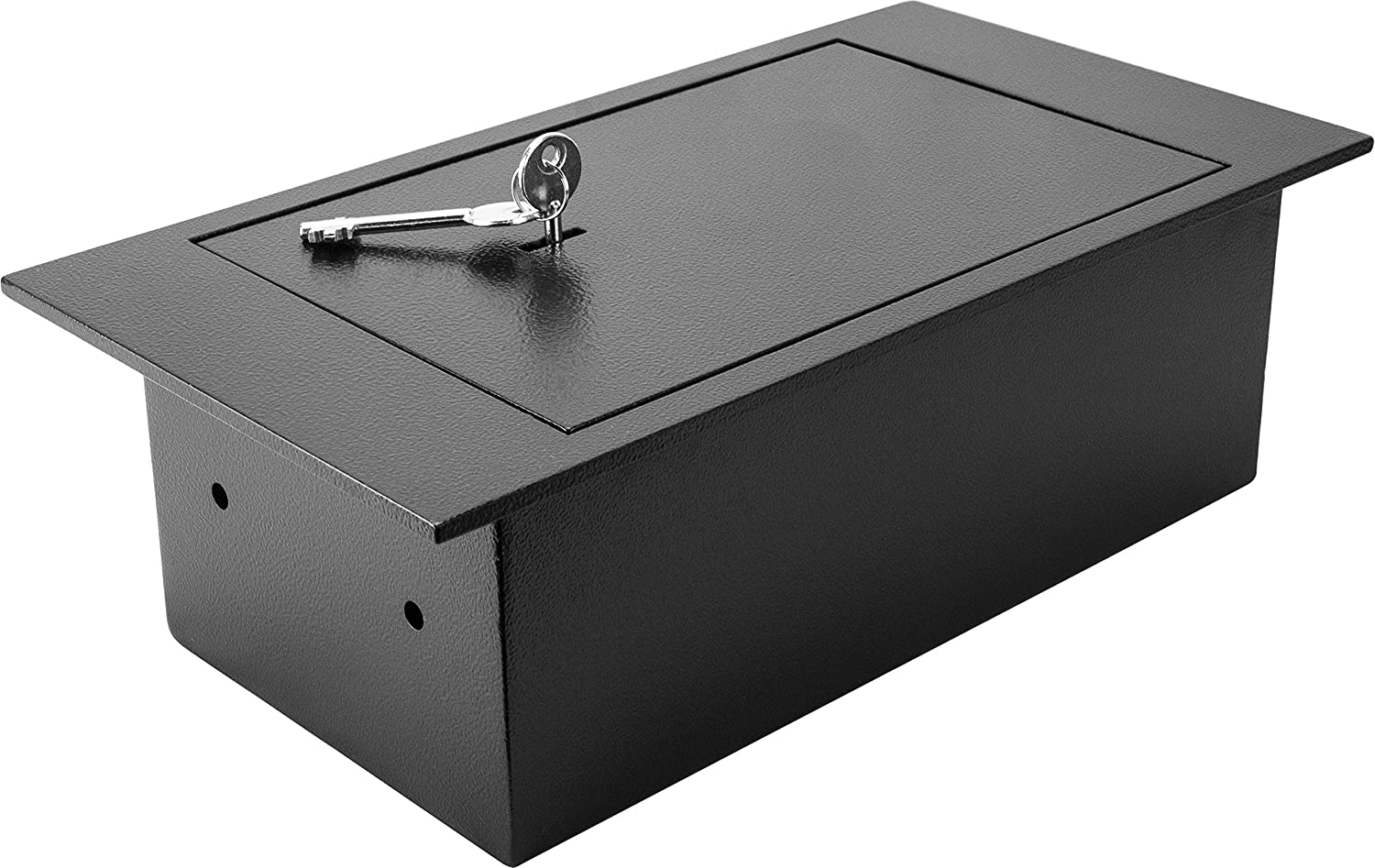
One of the biggest benefits of floor safes is that they are almost impossible to remove from a home. This type of safe is embedded into a concrete floor, which means they can’t simply be pried loose with a crowbar or other tools. Another benefit of using a floor safe is that they can be easily hidden, making it less likely for a burglar to even know it is there in the first place. You can slide furniture or rugs over the safe to hide it from sight.
There are a few things to keep in mind before having a floor safe installed in your home, however. Because they are embedded in concrete, it is more likely for the metal to rust. Overtime, the contents of the safe may be damaged by moisture. If you plan to use a floor safe, be sure to look for one with protective coatings that reduce rusting. Additionally, place your documents and valuables inside an airtight container or sealed plastic bag before placing them in the safe.
Best For: Preventing burglars from stealing the safe.
Our Recommendation: Barska Floor Safe for $91.99 on Amazon
Once installed, this durable steel floor safe will sit flush with the floor for easy concealment.
6. Wall Safe
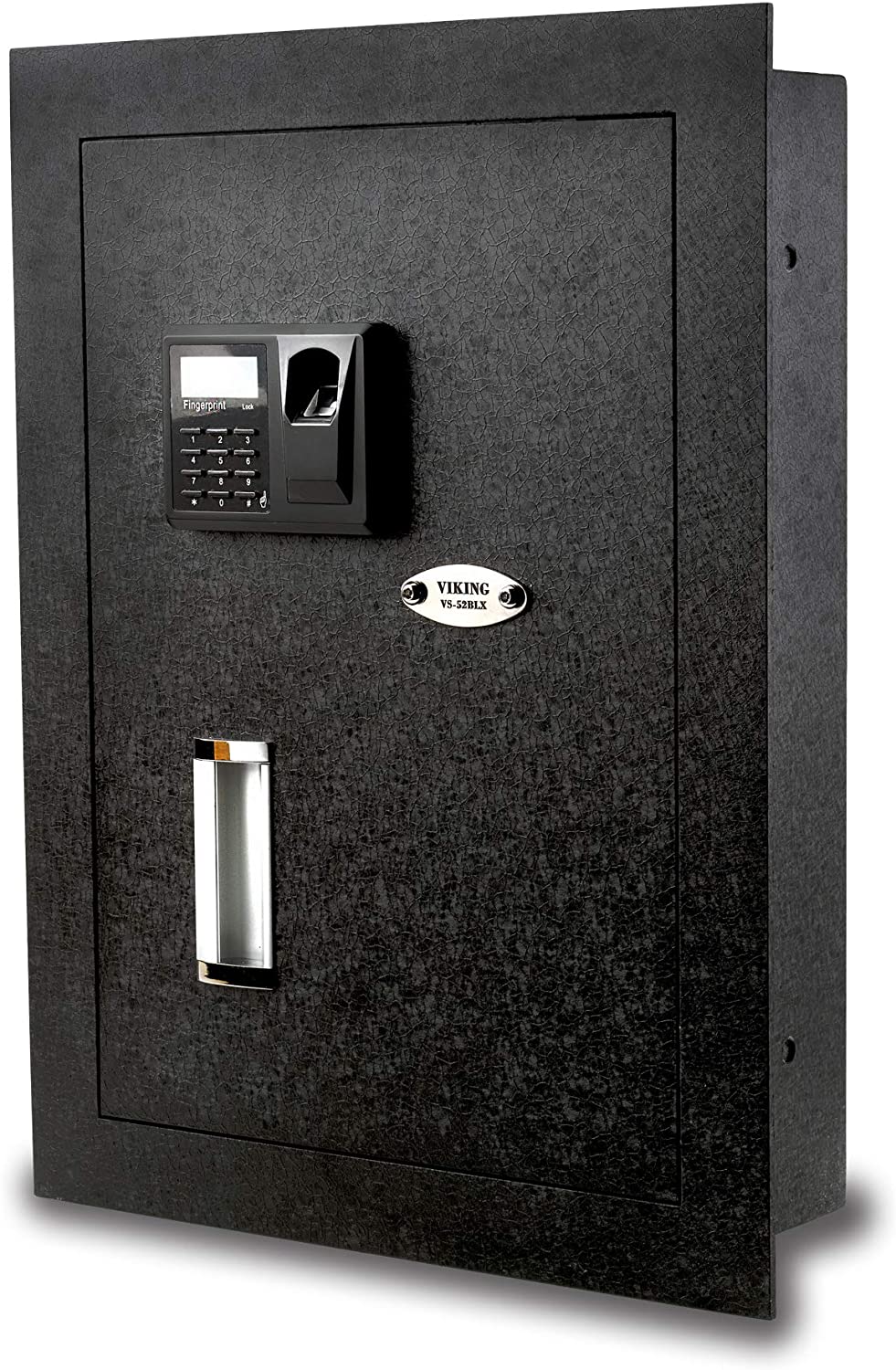
You can also hide a safe in your walls. Wall safes are secured to the studs in the wall. Like floor safes, they are more difficult for burglars to remove and take out of a home. Once your wall safe is installed, consider hanging artwork over it to hide it from unwanted visitors.
A benefit of using a wall safe over a floor safe is that you won’t need to bend or crouch down to add or remove valuables. Rather, the safe will be at a more comfortable height, and you’ll be able to access the contents from a more comfortable position.
Best For: Concealing valuables while ensuring comfortable access.
Our Recommendation: Viking Security Biometric Wall Safe on Amazon for $289.97
Keep your belongings safe and hidden in the wall with this safe featuring a biometric fingerprint lock, motorized 20-millimeter deadbolt locking mechanism, and thick 5-millimeter pry-resistant door.
RELATED: The 16 Smartest Places to Hide a Safe in Your Home
Home Safe Locking Options
In addition to choosing from the types of safes listed above, there are also various locking options to consider. Different safes may have either a key lock, combination dial lock, digital lock, fingerprint lock, or a dual lock that utilizes two lock types.
Key Lock
Some safes feature a locking mechanism that is opened by a key. This type of safe is typically less expensive than ones with electronic or biometric lock systems. It is also easy to open and doesn’t require the user to memorize any combinations. However, if the keys are lost, accessing the safe can be difficult. Additionally, if someone else were to take your keys, it would be quick and easy for them to gain access to the safe’s contents.
Pros: Budget-friendly option that can be opened without the need to memorize a combination.
Cons: If the keys are lost or stolen, the contents might become inaccessible or not remain secure.
Combination Dial Lock
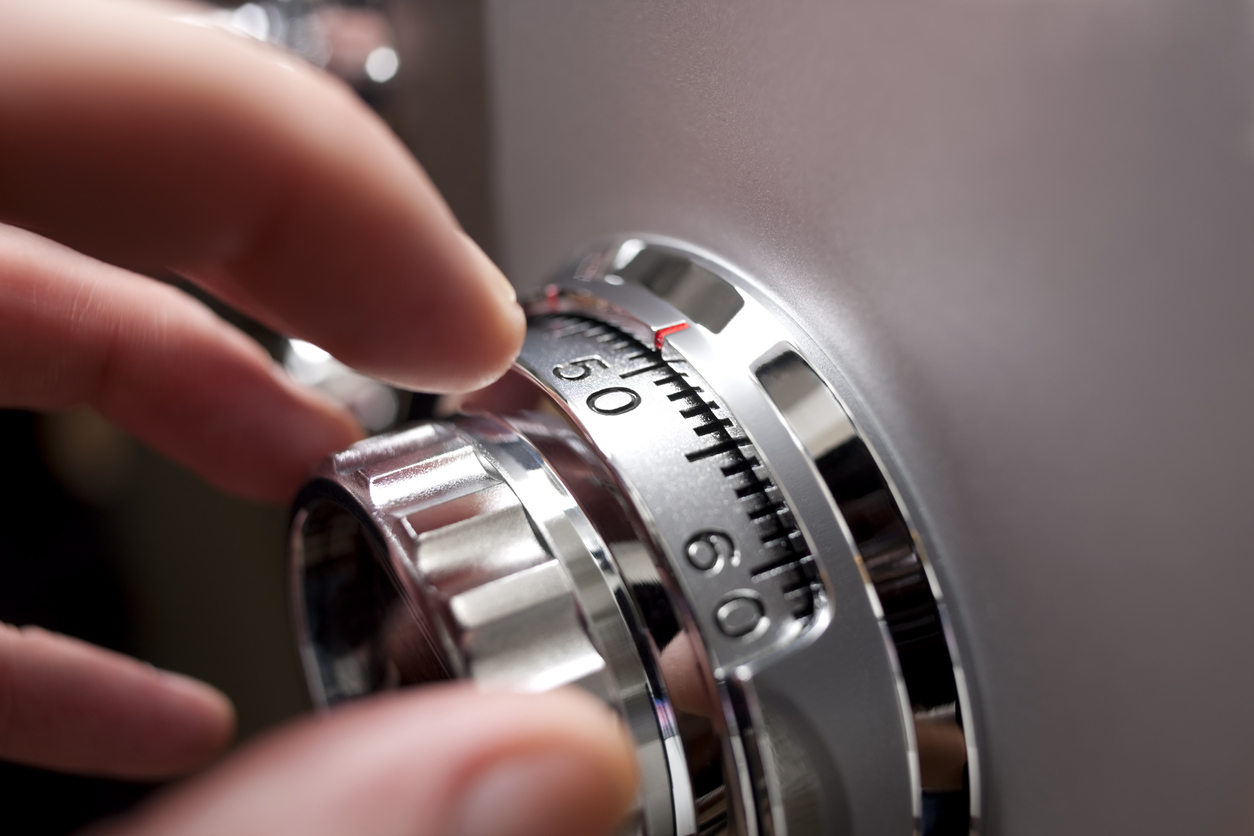
Combination dial lock safes open when the user enters the correct code on the dial. This type of safe features three or four wheels (one for each number in the combination). When the correct combination is entered, the wheels turn, allowing the safe to be opened.
Pros: With over 1 million combinations for a three-wheel combination lock safe (and even more for a four-wheel combination lock safe), gaining access without knowing the code is very difficult.
Cons: Opening the safe is more time-consuming with a combination dial.
Electronic or Digital Lock

Safes with an electronic lock are opened by keying in a code on the digital keypad. Most models allow users to change the code as desired, which can be a benefit if you want to remove someone’s ability to access your valuables, in cases such as divorce or termination of employment.
Pros: Quicker to open than combination dial lock safes.
Cons: Require batteries that need to be changed.
Biometric Lock
Safes with biometric locks are the most difficult for someone other than the owner to unlock. These safes take either a retinal scan or a fingerprint scan and open only if the scan matches the information on file. They also eliminate the necessity for individuals to remember a code or use a key to access the safe—allowing for quicker access.
Pros: Highly secure safe type that allows individuals to quickly and easily access their valuables.
Cons: More expensive than the other types of safes.
Dual Lock
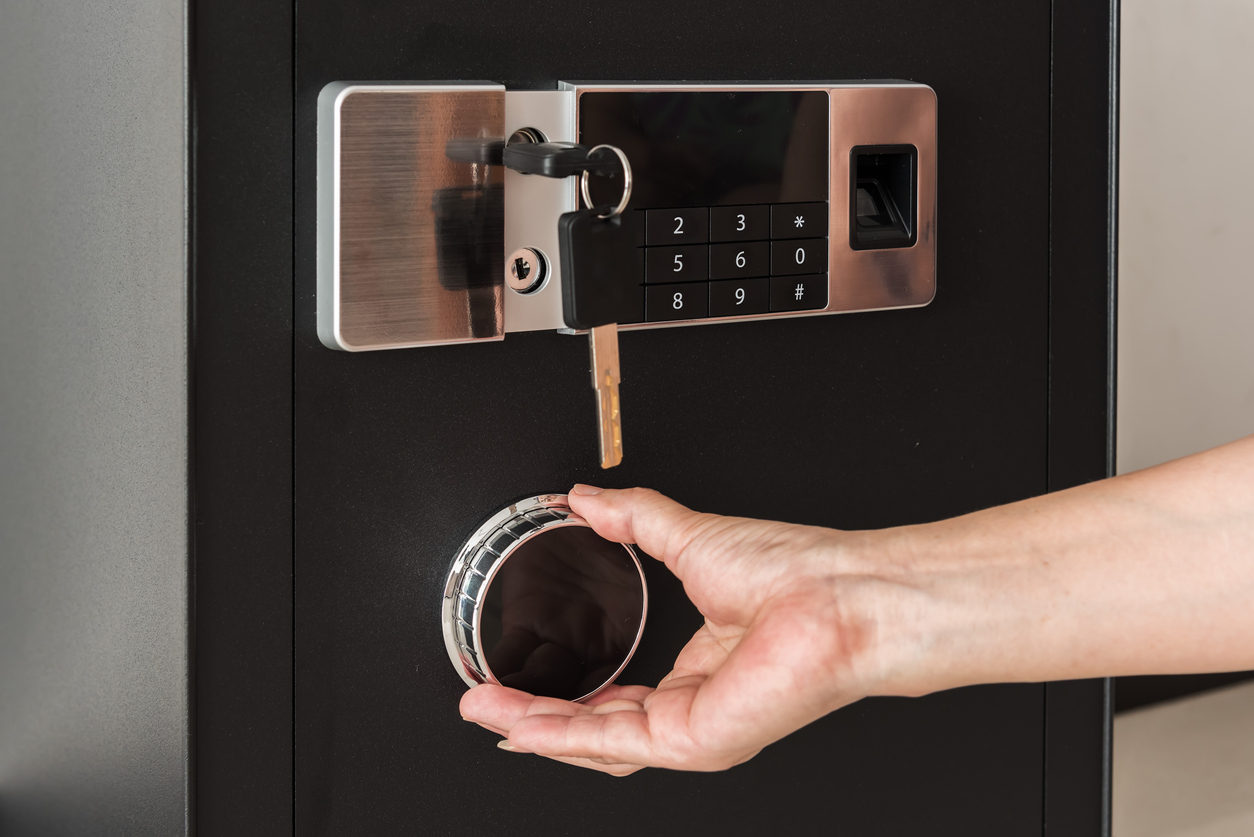
Dual lock safes are designed to add an extra layer of protection. These models require two methods of entry to be used before they will open. For example, some dual lock safes need two different keys to open, while others may have a combination dial or digital keypad paired with a physical key.
Pros: More secure with two different locking mechanisms.
Cons: Can be more time-consuming to open.
RELATED: Thinking About Installing a Hidden Bookcase Door? Consider These 7 Issues First
The prices listed here are accurate as of publication on 8/4/2022.

